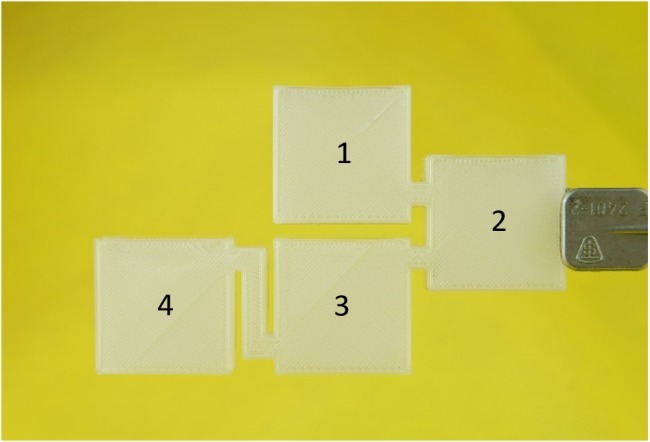
Communicating vessels with four containers - quiz: "Which tank will be full first?"
thingiverse
In November 2016, social networks began spreading the problem, asking "Which tank will fill up first?" Various responses emerged and continue to be discussed. During conversations with students, misconceptions often stem from misunderstandings about communicating vessels. All printed components behave like transparent optical environments where light passes through partially but also scatters as it moves. The liquid becomes more visible after being stained with food dye. The correct answer to the original question is that the fourth and third tanks fill simultaneously (a container filled to the top is considered a full tank). Communicating vessels are containers holding a homogeneous fluid connected at the base, subjected to the same atmospheric pressure. When the liquid settles, it balances out to the same level in all containers, regardless of shape or volume. If liquid is added to one vessel, it will find a new equal level in all connected vessels. The chosen sizes for the coupled vessels are almost borderline, with smaller dimensions involving other physical phenomena in fluid behavior. Capillary elevations or depressions may occur with small and different diameters of vessels or their connections, significant when dealing with vessels around millimeters or less in diameter. Filling the top container should be done slowly using a syringe, ideally in a hood as shown in the original instructions. An important condition is keeping liquids immobile to prevent fluid pressures varying due to Bernoulli's phenomenon.
With this file you will be able to print Communicating vessels with four containers - quiz: "Which tank will be full first?" with your 3D printer. Click on the button and save the file on your computer to work, edit or customize your design. You can also find more 3D designs for printers on Communicating vessels with four containers - quiz: "Which tank will be full first?".
